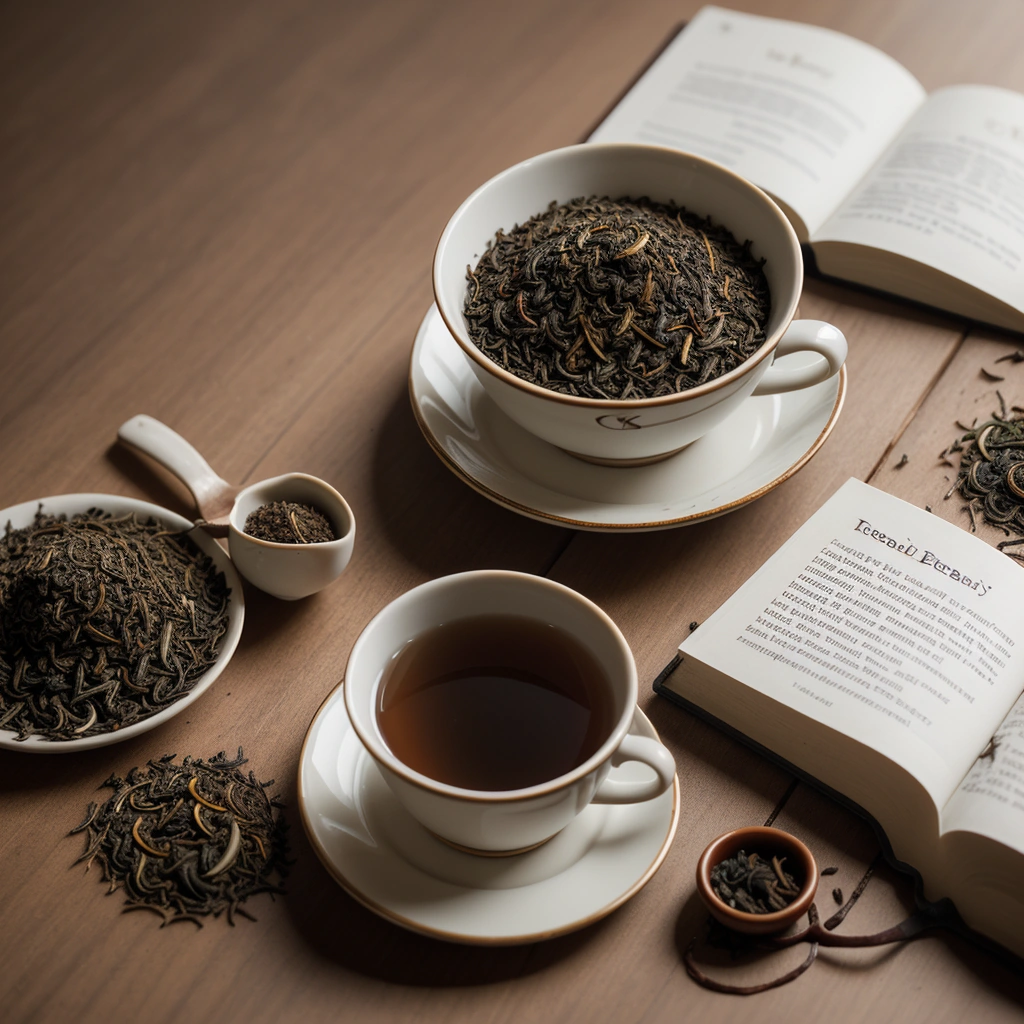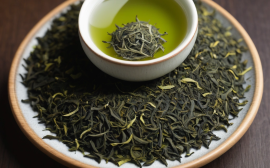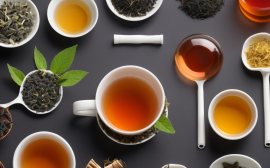A World in a Cup: Beyond the Earl Grey Horizon
For centuries, tea has transcended its simple definition as a beverage, evolving into a cultural cornerstone, a deeply ingrained ritual, and a comforting elixir cherished across the globe. While the familiar citrusy notes of Earl Grey might represent a starting point for many, the universe of tea varieties extends far beyond its bergamot-infused allure. This global tea guide serves as your passport to navigate the diverse and captivating landscape of teas, from the cloud-kissed peaks of China’s tea mountains to the sun-drenched slopes of India’s tea estates, and the meticulously cultivated gardens of Japan.
Prepare to awaken your senses and embark on a flavorful adventure, uncovering the subtle nuances and distinct characteristics that define each unique brew and contribute to the rich tapestry of global cuisine and lifestyle. Tea, in its myriad forms, offers not just hydration but an experience, a journey, and a connection to traditions spanning millennia. The art of brewing tea is as crucial as the quality of the leaves themselves, directly influencing the resulting tea flavor profiles.
Water temperature, steeping time, and even the type of vessel used can dramatically alter the taste and aroma. For instance, delicate White tea requires cooler water (around 170°F) and a shorter steeping time (1-3 minutes) to prevent bitterness and fully appreciate its subtle sweetness. Conversely, robust Assam tea, a staple in many breakfast blends, demands boiling water and a longer steep (3-5 minutes) to fully extract its malty, invigorating character. Mastering these techniques unlocks the full potential of each type of tea, transforming a simple act into a refined sensory experience that complements various culinary traditions and personal preferences.
Ethical tea sourcing is an increasingly vital consideration for the conscious tea consumer. The journey of tea, from plant to cup, often involves complex supply chains that can impact the livelihoods of tea farmers and the environment. Supporting companies committed to fair trade practices ensures that tea workers receive fair wages and safe working conditions, while sustainable farming methods protect the delicate ecosystems where tea thrives. By choosing ethically sourced teas, such as those certified by Fair Trade or Rainforest Alliance, consumers can contribute to a more equitable and environmentally responsible tea industry.
This conscious choice elevates the simple act of enjoying a cup of tea into a meaningful expression of global citizenship and responsible lifestyle choices, enriching the experience beyond mere flavor. Exploring the world of tea also means understanding the unique characteristics of different types of tea. From the robust boldness of black teas like Darjeeling tea, often referred to as the “Champagne of Teas,” to the vegetal freshness of Japanese Sencha tea and the earthy depth of aged Pu-erh tea, each category offers a distinct sensory experience.
Matcha tea, a finely ground powder traditionally used in Japanese tea ceremonies, provides a vibrant green hue and an intense, umami-rich flavor. Oolong tea, with its diverse range of oxidation levels, presents a spectrum of flavors from floral and light to roasted and complex. Delving into these distinct categories allows tea enthusiasts to appreciate the incredible diversity within the world of tea and to tailor their selections to suit their individual tastes and preferences, enhancing their overall beverage and lifestyle experience.
The Bold World of Black Teas
Black tea, fully oxidized, boasts a robust character and is a staple in many cultures, its deep flavors a reflection of both terroir and tradition. Originating primarily from China and India, the meticulous processing involves withering, rolling, oxidation, and drying, each step influencing the final tea flavor profiles. This category of types of tea offers a remarkable range, appealing to diverse palates and culinary traditions. Beyond its taste, black tea plays a significant role in global cuisine, often paired with specific foods to enhance the dining experience.
Assam tea, from India, offers a malty, bold flavor with high caffeine, making it an ideal choice for breakfast blends. Its robust character stands up well to milk and sugar, a testament to its enduring popularity in Western tea culture. Brew with boiling water for 3-5 minutes and pair with hearty breakfasts or spicy dishes; the tannins in Assam cut through rich flavors, creating a balanced sensory experience. Darjeeling tea, also from India, is revered as the ‘Champagne of Teas,’ distinguished by its delicate, floral aroma and medium caffeine content.
This tea variety showcases nuanced flavors that shift throughout the harvest seasons, making each cup a unique experience. Brew with slightly cooler water (200°F) for 3 minutes and enjoy with light pastries or fruit to fully appreciate its subtle complexities. English Breakfast, a blend of black teas (often Assam, Ceylon, and Kenyan), provides a balanced, full-bodied flavor and high caffeine, perfect for starting the day. This quintessential blend reflects the British tea tradition, a cornerstone of their lifestyle and social rituals.
Ceylon tea, from Sri Lanka, offers a bright, citrusy flavor with medium caffeine, a refreshing alternative to the bolder Assam. Brewing instructions are similar to Assam, and it pairs well with afternoon tea and lemon-based desserts, complementing the sweetness with its zesty notes. Kenyan black tea is known for its brisk, full-bodied flavor and high caffeine content, often used in blends to add strength and color. Its consistent quality makes it a reliable choice for tea blenders worldwide. When considering your global tea guide, remember that ethical tea sourcing is paramount, ensuring fair labor practices and sustainable farming methods. Exploring tea varieties goes beyond taste; it’s about understanding the cultural and economic impact of your choices.
The Refreshing Realm of Green Teas
Green tea, a cornerstone of Asian beverage culture, distinguishes itself through minimal oxidation, preserving its vibrant color, fresh taste, and a wealth of health-promoting compounds. Originating in China, the processing typically involves steaming or pan-firing freshly harvested leaves to halt oxidation, followed by careful drying. This gentle approach allows green tea to retain a higher concentration of catechins, particularly EGCG, known for their antioxidant properties. The nuanced flavors and health benefits have propelled green tea to global popularity, making it a sought-after beverage for health-conscious consumers and a versatile ingredient in modern cuisine.
As a vital element in the global tea guide, green tea offers a refreshing alternative to more robust tea varieties. Sencha, a quintessential Japanese green tea, embodies the art of simplicity and balance. Cultivated in full sunlight, Sencha leaves develop a distinctive grassy, vegetal flavor profile with a subtle astringency and a medium caffeine content. The brewing process is crucial to unlocking its delicate flavors; warm water (around 175°F or 80°C) for a brief infusion of 1-2 minutes is ideal, preventing bitterness.
Sencha’s refreshing qualities make it a perfect accompaniment to sushi, light salads, and other delicate dishes, showcasing its versatility within global cuisine. Its popularity extends beyond traditional tea ceremonies, finding its way into modern cafes and health-focused beverages. Matcha, another celebrated Japanese green tea, stands apart due to its unique preparation and consumption method. Unlike other types of tea, Matcha is consumed whole, as finely ground powder whisked into hot water (ideally around 175°F or 80°C) to create a frothy, vibrant green beverage.
This method delivers a concentrated dose of antioxidants and a noticeable caffeine boost. Matcha’s distinctive flavor profile, characterized by a slightly bitter, umami-rich taste, has made it a popular ingredient in lattes, smoothies, and desserts. Its versatility has fueled a global Matcha craze, with innovative culinary applications constantly emerging, as explored in publications like ’10 Ways to Drink and Eat Matcha, From Tea Ceremonies to Lattes and Desserts’. The increasing demand also highlights the importance of ethical tea sourcing to ensure sustainable practices.
Beyond Sencha and Matcha, the realm of green tea encompasses a diverse array of tea varieties, each with its unique characteristics. Gyokuro, a shaded Japanese green tea, develops a sweet, umami flavor thanks to the shading process, which increases chlorophyll and L-theanine levels. Dragon Well (Longjing), from China, offers a nutty, slightly sweet flavor profile, making it a refreshing choice for any time of day. Gunpowder, a Chinese green tea rolled into tight pellets, delivers a bold, smoky flavor. Exploring these diverse tea flavor profiles allows tea enthusiasts to appreciate the complexity and artistry inherent in green tea production. When brewing tea, water temperature and steeping time are critical factors in extracting the desired flavors and avoiding bitterness, regardless of the specific tea varieties.
Oolong, Pu-erh, and White Teas: A Spectrum of Flavors
Oolong tea, partially oxidized, presents a spectrum of flavors depending on the oxidation level. Originating in China and Taiwan, processing involves withering, rolling, partial oxidation, and firing. Tieguanyin, a Chinese oolong, offers a floral, roasted flavor with medium caffeine. Brew with hot water (195°F) for 3-5 minutes and appreciate its complex aroma. Da Hong Pao, a highly prized Chinese oolong, boasts a rich, mineral flavor and medium caffeine. Brew with hot water (200°F) for multiple infusions.
Formosa Oolong, from Taiwan, presents a fruity, honeyed flavor with medium caffeine. Brew with hot water (190°F) for 3-5 minutes and pair with fruit or cheese. These diverse tea flavor profiles showcase the versatility of Oolong tea varieties and make it a delightful exploration for any tea enthusiast. Exploring Oolong also offers insights into the art of brewing tea, as different oxidation levels and leaf styles require nuanced approaches to water temperature and steeping time.
The world of types of tea is vast, and Oolong presents an excellent starting point for those seeking complexity. Pu-erh tea, a fermented tea from Yunnan, China, offers earthy, musky flavors and low to medium caffeine. It is often aged and compressed into cakes or bricks, with some vintages fetching exorbitant prices among collectors. The aging process transforms the tea’s character over time, developing a depth and smoothness that is highly sought after. Brewing Pu-erh tea often involves a rinsing step to awaken the leaves before the primary infusion, typically using boiling water for 1-3 minutes.
Ethical tea sourcing is particularly important with Pu-erh, given its regional specificity and the potential for exploitation in the industry. Pu-erh offers a unique experience that sets it apart from other types of tea. White tea, the least processed tea, retains its delicate flavor and high antioxidant content. Originating in China, processing involves simply withering and drying the leaves, preserving its natural character. Silver Needle (Bai Hao Yin Zhen) offers a subtle, sweet flavor and low caffeine, making it an excellent choice for those sensitive to stimulants or seeking a calming beverage.
Brew with warm water (170°F) for 2-3 minutes to avoid scorching the delicate leaves. Compared to bolder teas like Assam tea or even Sencha tea and Matcha tea, white tea offers a serene and understated experience. As part of a global tea guide, understanding white tea’s unique characteristics is crucial for appreciating the full spectrum of tea’s offerings. The nuances in brewing tea, especially for white tea, highlight the importance of water temperature and steeping time in extracting the desired flavor.
Grading, Ethics, and the Perfect Cup
Navigating the intricate world of tea extends beyond mere flavor profiles; it necessitates a comprehension of grading systems, ethical sourcing, and the nuanced art of brewing. While tea grading, particularly in black teas, employs terms like ‘Orange Pekoe’ and ‘Flowery Orange Pekoe’ to classify leaf size, these classifications offer limited insight into the actual tea flavor profiles. A ‘Flowery Orange Pekoe’ Assam tea, for example, might still present a vastly different cup than a similar grade of Darjeeling tea, underscoring the importance of origin and processing methods.
Understanding these nuances allows tea enthusiasts to move beyond superficial classifications and truly appreciate the diversity within tea varieties. Ethical tea sourcing represents a critical dimension of the global tea guide, directly impacting the livelihoods of tea farmers and the sustainability of tea-growing regions. The tea industry, historically plagued by exploitative practices, demands increased transparency and accountability. Certifications like Fair Trade and Rainforest Alliance serve as valuable indicators, but consumers should also actively seek out companies committed to fair wages, safe working conditions, and environmentally responsible practices.
Supporting these companies helps address unethical practices in the tea industry and fosters a more equitable supply chain. The art of brewing tea significantly influences the final cup. Each type of tea, from the delicate White tea to the earthy Pu-erh tea, requires specific brewing parameters to unlock its full potential. Over-steeping a Sencha tea can result in a bitter brew, while under-extracting an Oolong tea may leave its complex aromas muted. Experimentation is key: adjust water temperature, steeping time, and leaf-to-water ratios to discover your preferred method for each tea.
Consider exploring traditional brewing techniques, such as the Gongfu method for Oolong tea, to deepen your appreciation for the ritual and the resulting tea flavor profiles. Ultimately, exploring the world of tea is an ongoing journey of sensory discovery and cultural immersion. Embrace the opportunity to experiment with different types of tea, from the vibrant Matcha tea to the robust Assam tea, and to explore the diverse brewing methods that unlock their unique characteristics. By prioritizing ethical tea sourcing and deepening your understanding of tea varieties, you contribute to a more sustainable and equitable industry while enriching your own experience. Find your perfect cup, and let it be a testament to the rich history and global connections embodied within this remarkable beverage.



